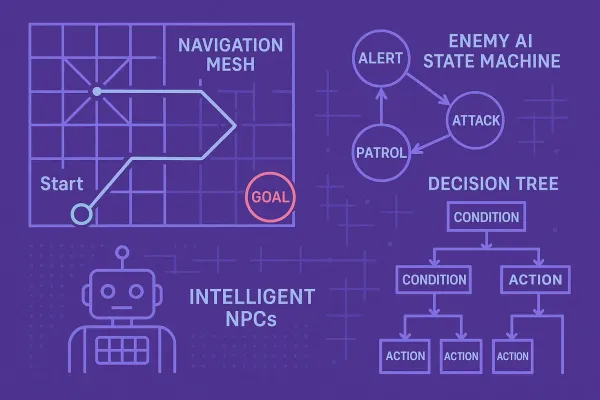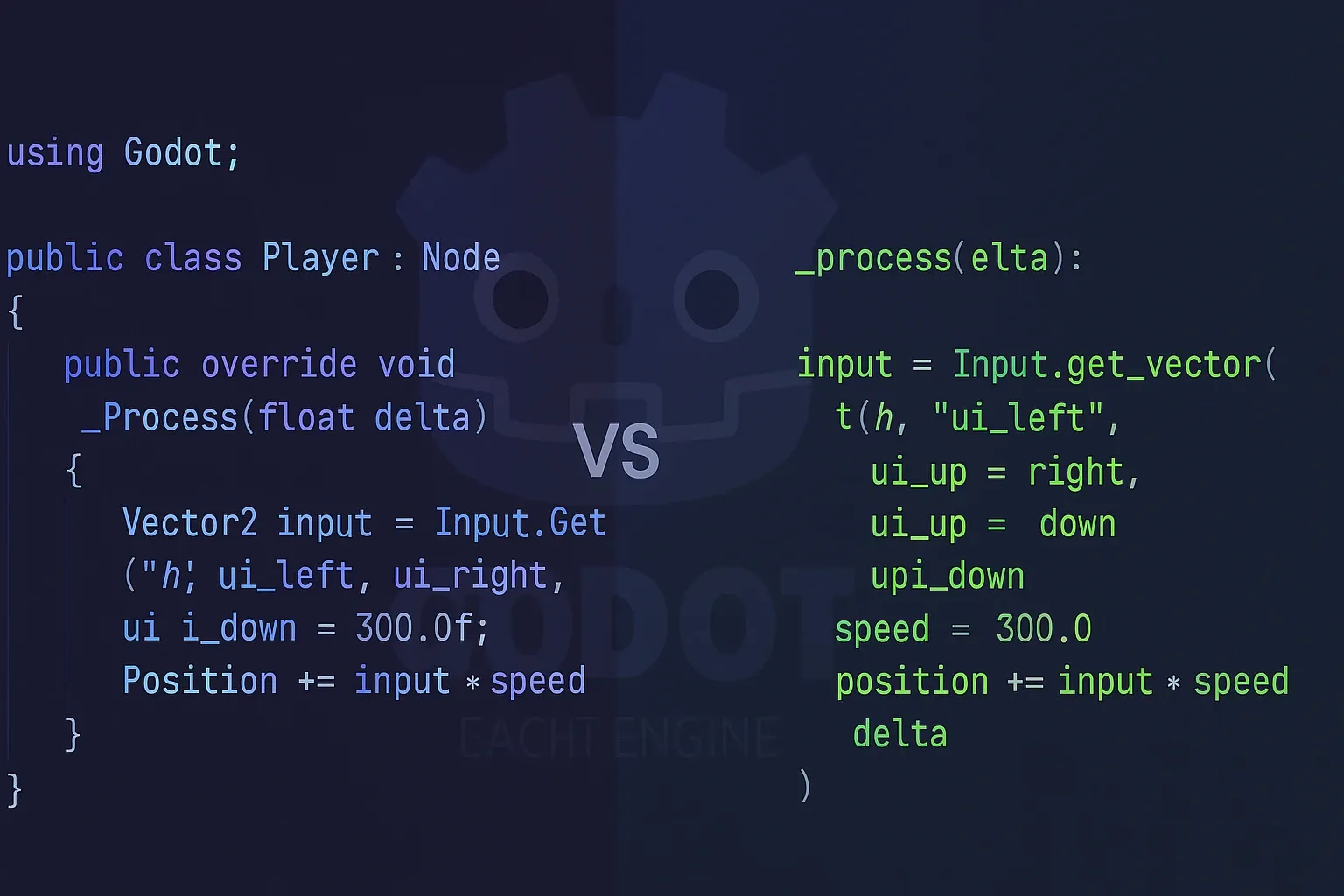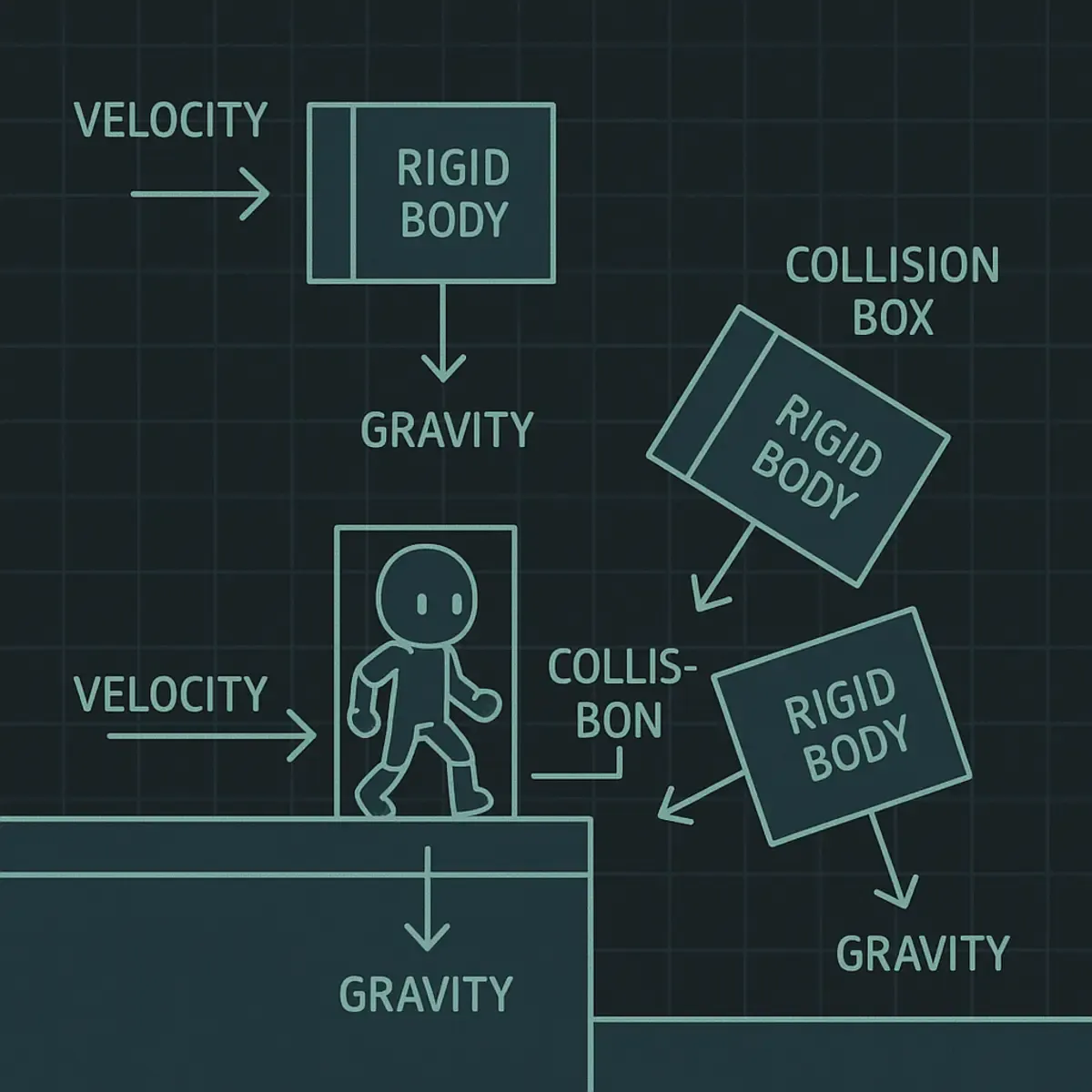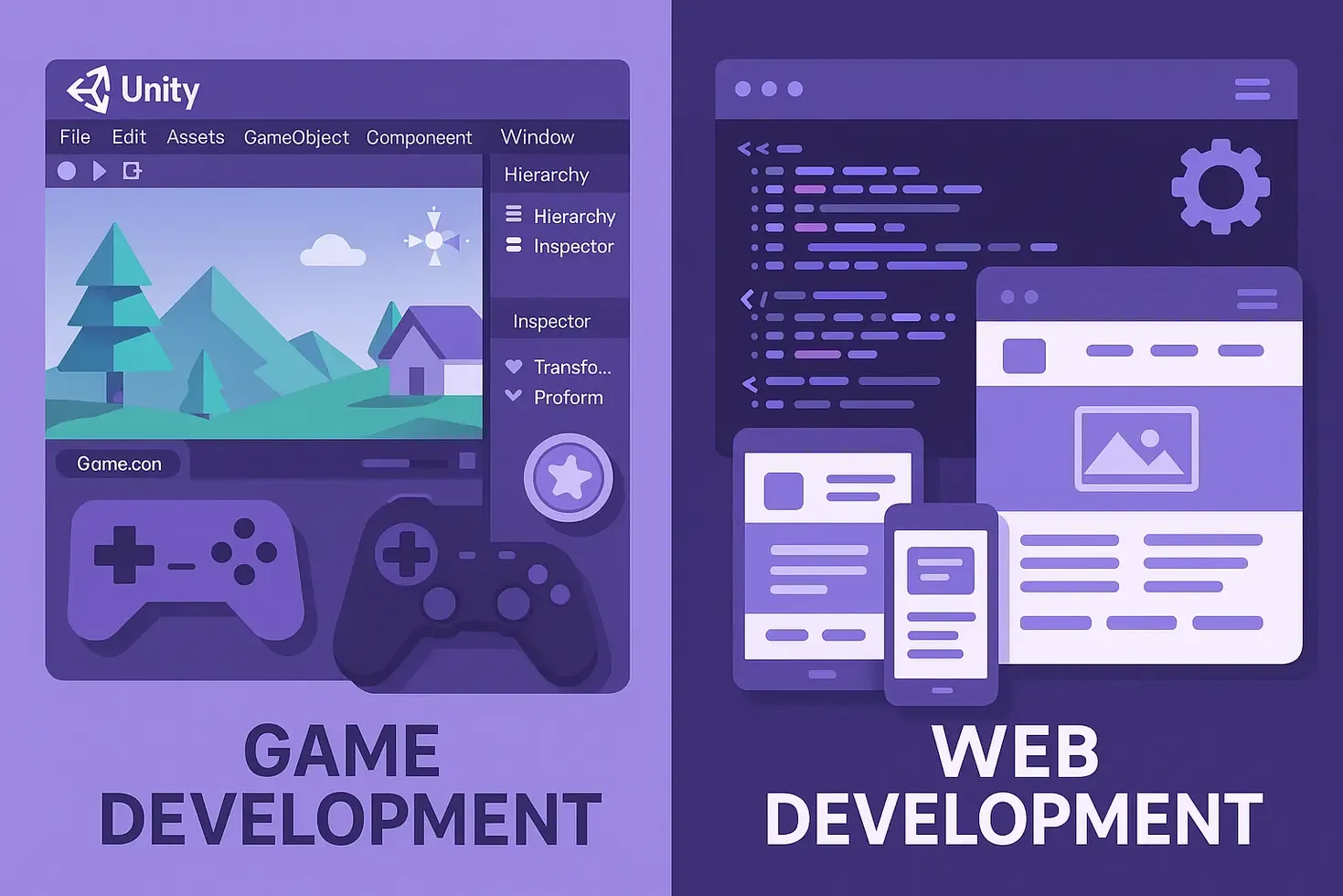IA Para Jogos no Godot: Pathfinding, Behavior Trees e State Machines

Aprenda a criar IA para NPCs e inimigos no Godot. Tutorial completo de pathfinding, behavior trees, state machines e técnicas de IA para jogos envolventes.
Índice do Conteúdo
Artigos Relacionados

C# vs GDScript no Godot: Qual Linguagem Escolher em 2025?
01/10/2025

Física de Jogos no Godot: Tutorial Completo de CharacterBody e RigidBody
01/10/2025

Audio Design para Jogos: Guia Completo de Música e Efeitos Sonoros
01/10/2025

IA no Desenvolvimento de Jogos: Geração Procedural e NPCs Inteligentes
16th Oct 2025

Desenvolvimento de Jogos vs Programação Web: Qual Escolher?
16th Oct 2025
IA Para Jogos no Godot: Pathfinding, Behavior Trees e State Machines
Inteligência Artificial transforma NPCs de objetos estáticos em entidades convincentes que reagem, perseguem, patrulham e desafiam players. IA não precisa ser complexa para ser efetiva - a maioria dos jogos usa técnicas relativamente simples masterfully combinadas.
No Godot Engine, ferramentas nativas como NavigationServer, state machines implementadas via script e behavior trees (via plugins ou custom) permitem criar IA robusta sem frameworks complexos externos. Com GDScript's syntaxe limpa, implementar IA é surpreendentemente acessível.
Neste tutorial completo, vou te ensinar desde fundamentos de IA para jogos até implementações práticas no Godot. Cobriremos state machines, pathfinding com NavigationServer, behavior trees, decision making, e técnicas para criar inimigos interessantes e NPCs convincentes.
Fundamentos: O Que é IA em Jogos?
IA em jogos difere dramaticamente de IA acadêmica (machine learning, neural networks). Game AI prioriza comportamento convincente sobre "intelligence" real.
Objetivo de Game AI
Não é: Criar IA imbatível que sempre vence É: Criar IA divertida, justa e que parece inteligente
Características de boa game AI:
- Previsível o suficiente para player entender
- Imprevisível o suficiente para não ser boring
- Justa (não cheat óbvio com informação perfeita)
- Escalável em dificuldade
Técnicas Comuns
1. State Machines: Comportamento muda baseado em estado (Idle → Chase → Attack) 2. Pathfinding: Navegar de A para B evitando obstáculos 3. Behavior Trees: Estrutura hierárquica de decisões 4. Utility AI: Escolhe ação baseada em scores de "utilidade" 5. Steering Behaviors: Movimento natural (flee, pursuit, wander)
Godot facilita todas essas técnicas.
Descubra Seu Perfil em Game Development
IA para jogos situa-se entre programação e design. Requer pensamento sistêmico e compreensão de gameplay. Você tem perfil técnico para implementar sistemas complexos ou prefere focar em criatividade visual/narrativa?
State Machines: Fundação da Game AI
State Machines (Finite State Machines - FSM) são padrão mais básico e útil.
Conceito
Entidade está sempre em um estado específico. Estados definem comportamento. Transições mudam entre estados baseado em condições.
Exemplo - Enemy AI:
IDLE → (player spotted) → CHASE → (in range) → ATTACK
ATTACK → (player fled) → CHASE → (player too far) → IDLE
Implementação Básica em Godot
extends CharacterBody2D
enum State { IDLE, PATROL, CHASE, ATTACK }
var current_state = State.IDLE
var player: Node2D = null
@export var detection_range = 200.0
@export var attack_range = 50.0
@export var chase_speed = 150.0
func _physics_process(delta):
match current_state:
State.IDLE:
state_idle(delta)
State.PATROL:
state_patrol(delta)
State.CHASE:
state_chase(delta)
State.ATTACK:
state_attack(delta)
# Check transitions
check_transitions()
func state_idle(delta):
velocity = velocity.move_toward(Vector2.ZERO, 100 * delta)
move_and_slide()
func state_patrol(delta):
# Implement patrol logic (waypoints, random walk, etc.)
pass
func state_chase(delta):
if player:
var direction = (player.global_position - global_position).normalized()
velocity = direction * chase_speed
move_and_slide()
func state_attack(delta):
# Face player and execute attack
if player:
look_at(player.global_position)
# Trigger attack animation/damage
func check_transitions():
var distance_to_player = global_position.distance_to(player.global_position) if player else INF
match current_state:
State.IDLE:
if distance_to_player < detection_range:
transition_to(State.CHASE)
State.CHASE:
if distance_to_player > detection_range * 1.5: # Hysteresis
transition_to(State.IDLE)
elif distance_to_player < attack_range:
transition_to(State.ATTACK)
State.ATTACK:
if distance_to_player > attack_range * 1.2:
transition_to(State.CHASE)
func transition_to(new_state: State):
# Exit current state
match current_state:
State.ATTACK:
# Stop attack animation
pass
# Enter new state
current_state = new_state
match current_state:
State.CHASE:
print("Chasing player!")
State.ATTACK:
print("Attacking!")
# Start attack animation
Melhorias: Hierarchical State Machine
Para AI complexas, use estados dentro de estados:
# Parent state: COMBAT
# Sub-states: MELEE_ATTACK, RANGED_ATTACK, BLOCK, DODGE
var main_state = MainState.COMBAT
var combat_substate = CombatState.MELEE_ATTACK
Pathfinding com NavigationServer
Pathfinding permite AI navegar ambientes complexos evitando obstáculos.
Setup de Navigation2D
1. Crie NavigationRegion2D:
World (Node2D)
├── NavigationRegion2D
│ └── (Draw polygon covering walkable area)
├── Obstacles (StaticBody2D with collision)
└── Enemy (CharacterBody2D with AI)
2. Configure NavigationPolygon:
- Em NavigationRegion2D inspector, crie novo NavigationPolygon
- Use editor de polygon para desenhar área walkable
- Godot automaticamente gera navmesh evitando colisões
3. Bake Navigation:
- Clique "Bake NavigationPolygon" no editor
- Godot calcula pathfinding mesh
Usando Pathfinding em AI
extends CharacterBody2D
@export var speed = 200.0
var path: PackedVector2Array = []
var path_index = 0
func _ready():
# Get reference to player
player = get_node("/root/World/Player")
func _physics_process(delta):
if current_state == State.CHASE:
# Update path periodically (every 0.5s for performance)
if Time.get_ticks_msec() % 500 < 16: # Approximately every 0.5s
update_path_to_player()
follow_path(delta)
func update_path_to_player():
if player:
# NavigationServer2D calcula path
var start = global_position
var end = player.global_position
path = NavigationServer2D.map_get_path(
get_world_2d().navigation_map,
start,
end,
true # optimize path
)
path_index = 0
func follow_path(delta):
if path.size() == 0 or path_index >= path.size():
return
var target = path[path_index]
var direction = (target - global_position).normalized()
velocity = direction * speed
move_and_slide()
# Reached waypoint?
if global_position.distance_to(target) < 10.0:
path_index += 1
Obstacles Dinâmicos
Para obstacles que movem (portas, plataformas):
# Obstacle.gd
extends AnimatableBody2D
func _ready():
# Marcar como navigation obstacle
set_avoidance_enabled(true)
func _on_door_opened():
# Atualizar navigation quando estado muda
NavigationServer2D.region_set_enabled(navigation_region, true)
Behavior Trees: IA Modular e Escalável
Behavior Trees estruturam decisões hierarquicamente, permitindo AI complexa e modular.
Conceito
Tree de nodes que executam em ordem:
- Sequence: Executa children até um falhar
- Selector: Executa children até um suceder
- Action: Executa comportamento (attack, flee, etc.)
- Condition: Checa condição (player visible? health low?)
Exemplo - Enemy Behavior Tree:
Selector (Root)
├── Sequence (Combat)
│ ├── Condition: Player in range
│ ├── Action: Face player
│ └── Action: Attack
├── Sequence (Chase)
│ ├── Condition: Player spotted
│ └── Action: Move towards player
└── Action: Patrol (fallback)
Implementação Simples
# BehaviorTree.gd
extends Node
enum Status { SUCCESS, FAILURE, RUNNING }
class BehaviorNode:
func execute(agent) -> Status:
return Status.FAILURE
class Sequence extends BehaviorNode:
var children: Array = []
func execute(agent) -> Status:
for child in children:
var result = child.execute(agent)
if result != Status.SUCCESS:
return result
return Status.SUCCESS
class Selector extends BehaviorNode:
var children: Array = []
func execute(agent) -> Status:
for child in children:
var result = child.execute(agent)
if result != Status.FAILURE:
return result
return Status.FAILURE
class Condition extends BehaviorNode:
var condition_func: Callable
func execute(agent) -> Status:
return Status.SUCCESS if condition_func.call(agent) else Status.FAILURE
class Action extends BehaviorNode:
var action_func: Callable
func execute(agent) -> Status:
return action_func.call(agent)
Usando Behavior Tree
# Enemy.gd
extends CharacterBody2D
var behavior_tree: BehaviorNode
func _ready():
behavior_tree = build_behavior_tree()
func _physics_process(delta):
behavior_tree.execute(self)
func build_behavior_tree() -> BehaviorNode:
var root = Selector.new()
# Combat behavior
var combat = Sequence.new()
combat.children = [
Condition.new(is_player_in_attack_range),
Action.new(face_player),
Action.new(attack_player)
]
# Chase behavior
var chase = Sequence.new()
chase.children = [
Condition.new(is_player_spotted),
Action.new(chase_player)
]
# Patrol (fallback)
var patrol = Action.new(patrol_area)
root.children = [combat, chase, patrol]
return root
func is_player_in_attack_range(agent) -> bool:
return agent.global_position.distance_to(player.global_position) < attack_range
func is_player_spotted(agent) -> bool:
return agent.global_position.distance_to(player.global_position) < detection_range
func attack_player(agent) -> int:
# Execute attack
return BehaviorTree.Status.SUCCESS
func chase_player(agent) -> int:
# Move towards player
var direction = (player.global_position - agent.global_position).normalized()
agent.velocity = direction * chase_speed
agent.move_and_slide()
return BehaviorTree.Status.RUNNING
func patrol_area(agent) -> int:
# Patrol logic
return BehaviorTree.Status.RUNNING
Behavior Tree Plugins
Para projetos maiores, considere plugins:
- Beehave: Plugin Godot behavior tree popular
- Limboai: Behavior tree + utility AI
Steering Behaviors: Movimento Natural
Steering behaviors criam movimento orgânico e realista.
Seek (Perseguir)
func seek(target_pos: Vector2) -> Vector2:
var desired_velocity = (target_pos - global_position).normalized() * max_speed
return desired_velocity - velocity # Steering force
Flee (Fugir)
func flee(threat_pos: Vector2) -> Vector2:
var desired_velocity = (global_position - threat_pos).normalized() * max_speed
return desired_velocity - velocity
Wander (Vagar)
var wander_angle = 0.0
func wander(delta: float) -> Vector2:
# Change direction randomly
wander_angle += randf_range(-1.0, 1.0) * delta
var circle_center = velocity.normalized() * 100.0 # Ahead of agent
var displacement = Vector2(cos(wander_angle), sin(wander_angle)) * 50.0
return circle_center + displacement
Combinando Behaviors
func _physics_process(delta):
var steering = Vector2.ZERO
if player_spotted:
steering += seek(player.global_position) * 1.0
else:
steering += wander(delta) * 0.5
# Avoid other enemies
for enemy in nearby_enemies:
steering += separation(enemy.global_position) * 0.3
velocity += steering
velocity = velocity.limit_length(max_speed)
move_and_slide()
func separation(other_pos: Vector2) -> Vector2:
var diff = global_position - other_pos
var distance = diff.length()
if distance < separation_radius and distance > 0:
return diff.normalized() / distance
return Vector2.ZERO
Decision Making: Utility AI
Para decisões complexas com múltiplos fatores, Utility AI score opções.
Conceito
Cada ação tem utility score baseado em múltiplos fatores. AI escolhe ação com maior score.
Exemplo:
Attack: 0.8 (player close + health high)
Flee: 0.9 (health low + outnumbered)
Heal: 0.3 (health ok)
→ Choose FLEE (highest utility)
Implementação
class UtilityAction:
var name: String
var action: Callable
var considerations: Array = []
func calculate_utility(agent) -> float:
var score = 1.0
for consideration in considerations:
score *= consideration.call(agent)
return score
func decide_action() -> UtilityAction:
var actions = [
create_attack_action(),
create_flee_action(),
create_heal_action()
]
var best_action = null
var best_utility = -INF
for action in actions:
var utility = action.calculate_utility(self)
if utility > best_utility:
best_utility = utility
best_action = action
return best_action
func create_attack_action() -> UtilityAction:
var action = UtilityAction.new()
action.name = "Attack"
action.action = attack_player
action.considerations = [
func(agent): return 1.0 - agent.global_position.distance_to(player.global_position) / 500.0, # Closer = better
func(agent): return agent.health / agent.max_health # Higher health = more aggressive
]
return action
func create_flee_action() -> UtilityAction:
var action = UtilityAction.new()
action.name = "Flee"
action.action = flee_from_player
action.considerations = [
func(agent): return 1.0 - (agent.health / agent.max_health), # Lower health = flee more
func(agent): return 1.0 if nearby_enemies.size() > 3 else 0.0 # Outnumbered
]
return action
Domine Todas as Disciplinas de Game Development
IA é apenas uma das muitas skills. Jogos completos requerem programação, arte, design, áudio e mais. Aprenda a orquestrar todas as disciplinas ou a colaborar efetivamente com especialistas.
Perception: Senses Para AI
AI precisa "sentir" o mundo para tomar decisões.
Vision (Visão)
extends Area2D
@export var vision_range = 300.0
@export var vision_angle = 60.0 # Degrees
func _physics_process(delta):
var bodies = get_overlapping_bodies()
for body in bodies:
if body.is_in_group("player"):
if can_see(body):
on_player_spotted(body)
func can_see(target: Node2D) -> bool:
# Check distance
var distance = global_position.distance_to(target.global_position)
if distance > vision_range:
return false
# Check angle (cone vision)
var to_target = (target.global_position - global_position).normalized()
var forward = Vector2.RIGHT.rotated(global_rotation)
var angle = rad_to_deg(forward.angle_to(to_target))
if abs(angle) > vision_angle / 2:
return false
# Raycast for obstacles
var space_state = get_world_2d().direct_space_state
var query = PhysicsRayQueryParameters2D.create(global_position, target.global_position)
query.exclude = [self]
var result = space_state.intersect_ray(query)
if result and result.collider == target:
return true
return false
Hearing (Audição)
# Sound emmiter
extends Node2D
signal sound_made(position, loudness)
func make_noise(loudness: float):
sound_made.emit(global_position, loudness)
# AI listener
func _ready():
get_node("/root/World").sound_made.connect(_on_sound_heard)
func _on_sound_heard(sound_pos: Vector2, loudness: float):
var distance = global_position.distance_to(sound_pos)
if distance < loudness:
investigate_sound(sound_pos)
Debugging AI
AI bugs são sutis. Ferramentas de debug são essenciais.
Visual Debug
func _draw():
if Engine.is_editor_hint() or OS.is_debug_build():
# Draw detection range
draw_circle(Vector2.ZERO, detection_range, Color(1, 0, 0, 0.2))
# Draw current path
if path.size() > 0:
for i in range(path.size() - 1):
draw_line(path[i] - global_position, path[i+1] - global_position, Color.YELLOW, 2)
# Draw current state
draw_string(
ThemeDB.fallback_font,
Vector2(0, -50),
State.keys()[current_state],
HORIZONTAL_ALIGNMENT_CENTER,
-1,
16,
Color.WHITE
)
Logging States
func transition_to(new_state: State):
print("%s: %s → %s" % [name, State.keys()[current_state], State.keys()[new_state]])
current_state = new_state
AI Inspector
Crie UI debug:
# DebugPanel.gd
extends CanvasLayer
@onready var state_label = $Panel/VBoxContainer/StateLabel
@onready var target_label = $Panel/VBoxContainer/TargetLabel
func _process(delta):
var enemy = get_node("/root/World/Enemy")
state_label.text = "State: %s" % State.keys()[enemy.current_state]
target_label.text = "Target: %s" % enemy.player.name if enemy.player else "None"
Conclusão: IA Convincente é IA Divertida
Criar IA para jogos é balancear desafio e diversão. Muito fácil é boring, muito difícil é frustrante.
Recapitulando técnicas essenciais:
- ✅ State Machines: Base de qualquer AI (Idle/Chase/Attack)
- ✅ Pathfinding: NavigationServer para navegação inteligente
- ✅ Behavior Trees: Estrutura hierárquica para decisões complexas
- ✅ Steering Behaviors: Movimento natural e orgânico
- ✅ Utility AI: Decisões baseadas em múltiplos fatores
- ✅ Perception: Vision/hearing para awareness realista
- ✅ Debug visually: Essential para entender comportamento
Seu plano de implementação:
Semana 1: State machine básica (Idle → Chase → Attack) Semana 2: Adicione pathfinding para navigation inteligente Semana 3: Implemente perception (vision cone, hearing) Semana 4: Refine e balance dificuldade
Lembre-se: IA não precisa ser perfeita, precisa ser divertida. Às vezes, dar à AI "erros" deliberados torna gameplay melhor.
Agora implemente sua primeira AI enemy no Godot. Comece simples (chase player), depois adicione complexidade gradualmente.
Seu jogo merece inimigos interessantes. Crie eles agora.
Índice do Conteúdo
Artigos Relacionados

C# vs GDScript no Godot: Qual Linguagem Escolher em 2025?
01/10/2025

Física de Jogos no Godot: Tutorial Completo de CharacterBody e RigidBody
01/10/2025

Audio Design para Jogos: Guia Completo de Música e Efeitos Sonoros
01/10/2025

IA no Desenvolvimento de Jogos: Geração Procedural e NPCs Inteligentes
16th Oct 2025

Desenvolvimento de Jogos vs Programação Web: Qual Escolher?
16th Oct 2025